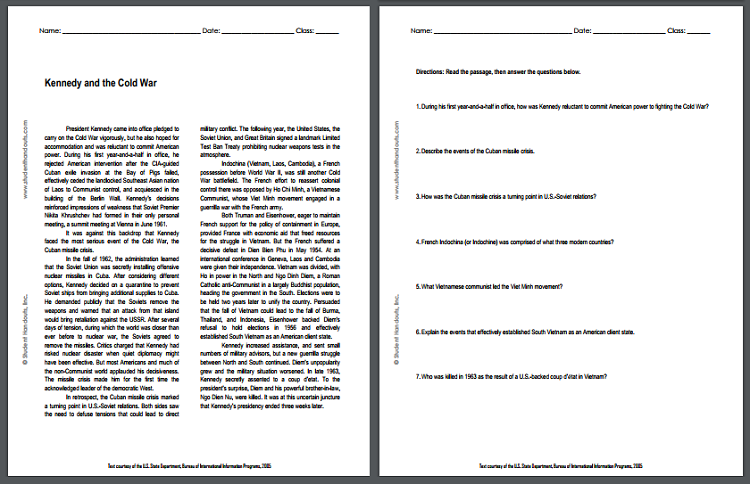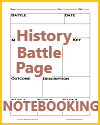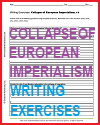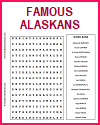| Kennedy and the Cold War Reading with Questions |
|---|
| www.studenthandouts.com ↣ American History ↣ American History Readings |
 |
|
President Kennedy came into office pledged to carry on the Cold War vigorously, but he also hoped for accommodation and was reluctant to commit American power. During his first year-and-a-half in office, he rejected American intervention after the CIA-guided Cuban exile invasion at the Bay of Pigs failed, effectively ceded the landlocked Southeast Asian nation of Laos to communist control, and acquiesced in the building of the Berlin Wall. Kennedy's decisions reinforced impressions of weakness that Soviet Premier Nikita Khrushchev had formed in their only personal meeting, a summit meeting at Vienna in June 1961. It was against this backdrop that Kennedy faced the most serious event of the Cold War, the Cuban missile crisis. In the fall of 1962, the administration learned that the Soviet Union was secretly installing offensive nuclear missiles in Cuba. After considering different options, Kennedy decided on a quarantine to prevent Soviet ships from bringing additional supplies to Cuba. He demanded publicly that the Soviets remove the weapons and warned that an attack from that island would bring retaliation against the USSR. After several days of tension, during which the world was closer than ever before to nuclear war, the Soviets agreed to remove the missiles. Critics charged that Kennedy had risked nuclear disaster when quiet diplomacy might have been effective. But most Americans and much of the non-communist world applauded his decisiveness. The missile crisis made him for the first time the acknowledged leader of the democratic West. In retrospect, the Cuban missile crisis marked a turning point in U.S.-Soviet relations. Both sides saw the need to defuse tensions that could lead to direct military conflict. The following year, the United States, the Soviet Union, and Great Britain signed a landmark Limited Test Ban Treaty prohibiting nuclear weapons tests in the atmosphere. Indochina (Vietnam, Laos, Cambodia), a French possession before World War II, was still another Cold War battlefield. The French effort to reassert colonial control there was opposed by Ho Chi Minh, a Vietnamese communist, whose Viet Minh movement engaged in a guerrilla war with the French army. Both Truman and Eisenhower, eager to maintain French support for the policy of containment in Europe, provided France with economic aid that freed resources for the struggle in Vietnam. But the French suffered a decisive defeat in Dien Bien Phu in May 1954. At an international conference in Geneva, Laos and Cambodia were given their independence. Vietnam was divided, with Ho in power in the North and Ngo Dinh Diem, a Roman Catholic anti-communist in a largely Buddhist population, heading the government in the South. Elections were to be held two years later to unify the country. Persuaded that the fall of Vietnam could lead to the fall of Burma, Thailand, and Indonesia, Eisenhower backed Diem's refusal to hold elections in 1956 and effectively established South Vietnam as an American client state. Kennedy increased assistance, and sent small numbers of military advisors, but a new guerrilla struggle between North and South continued. Diem's unpopularity grew and the military situation worsened. In late 1963, Kennedy secretly assented to a coup d'etat. To the president's surprise, Diem and his powerful brother-in-law, Ngo Dien Nu, were killed. It was at this uncertain juncture that Kennedy's presidency ended three weeks later. Directions: Read the text above, then answer the questions below. 1. During his first year-and-a-half in office, how was Kennedy reluctant to commit American power to fighting the Cold War? 2. Describe the events of the Cuban missile crisis. 3. How was the Cuban missile crisis a turning point in U.S.-Soviet relations? 4. French Indochina (or Indochine) was comprised of what three modern countries? 5. What Vietnamese communist led the Viet Minh movement? 6. Explain the events that effectively established South Vietnam as an American client state. 7. Who was killed in 1963 as the result of a U.S.-backed coup d'état in Vietnam? Click here to print. |
 |  |  |  |  |  |
| www.studenthandouts.com ↣ American History ↣ American History Readings |








